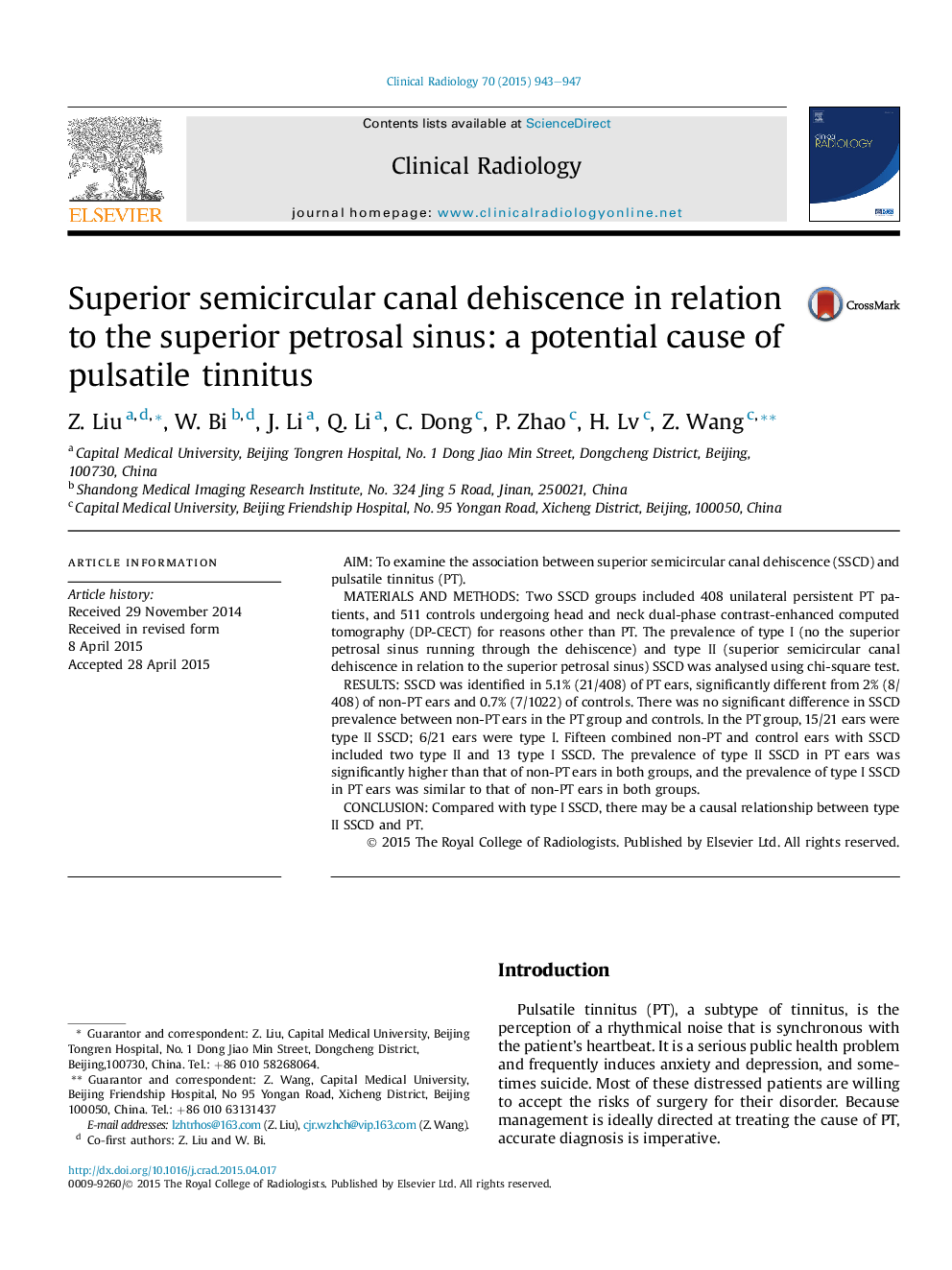| Article ID | Journal | Published Year | Pages | File Type |
|---|---|---|---|---|
| 6190786 | Clinical Radiology | 2015 | 5 Pages |
â¢The prevalence of type II SSCD in PT ears was significantly higher than that in non-PT ears in both the PT group and controls.â¢The prevalence of type I SSCD was similar among the PT ears and non-PT ears.â¢The superior petrosal sinus running through the dehiscence may be essential for SSCD to induce PT.â¢Venous phase CT images with bone window settings is the modality method to differentiate type II from type I SSCD.
AimTo examine the association between superior semicircular canal dehiscence (SSCD) and pulsatile tinnitus (PT).Materials and methodsTwo SSCD groups included 408 unilateral persistent PT patients, and 511 controls undergoing head and neck dual-phase contrast-enhanced computed tomography (DP-CECT) for reasons other than PT. The prevalence of type I (no the superior petrosal sinus running through the dehiscence) and type II (superior semicircular canal dehiscence in relation to the superior petrosal sinus) SSCD was analysed using chi-square test.ResultsSSCD was identified in 5.1% (21/408) of PT ears, significantly different from 2% (8/408) of non-PT ears and 0.7% (7/1022) of controls. There was no significant difference in SSCD prevalence between non-PT ears in the PT group and controls. In the PT group, 15/21 ears were type II SSCD; 6/21 ears were type I. Fifteen combined non-PT and control ears with SSCD included two type II and 13 type I SSCD. The prevalence of type II SSCD in PT ears was significantly higher than that of non-PT ears in both groups, and the prevalence of type I SSCD in PT ears was similar to that of non-PT ears in both groups.ConclusionCompared with type I SSCD, there may be a causal relationship between type II SSCD and PT.
